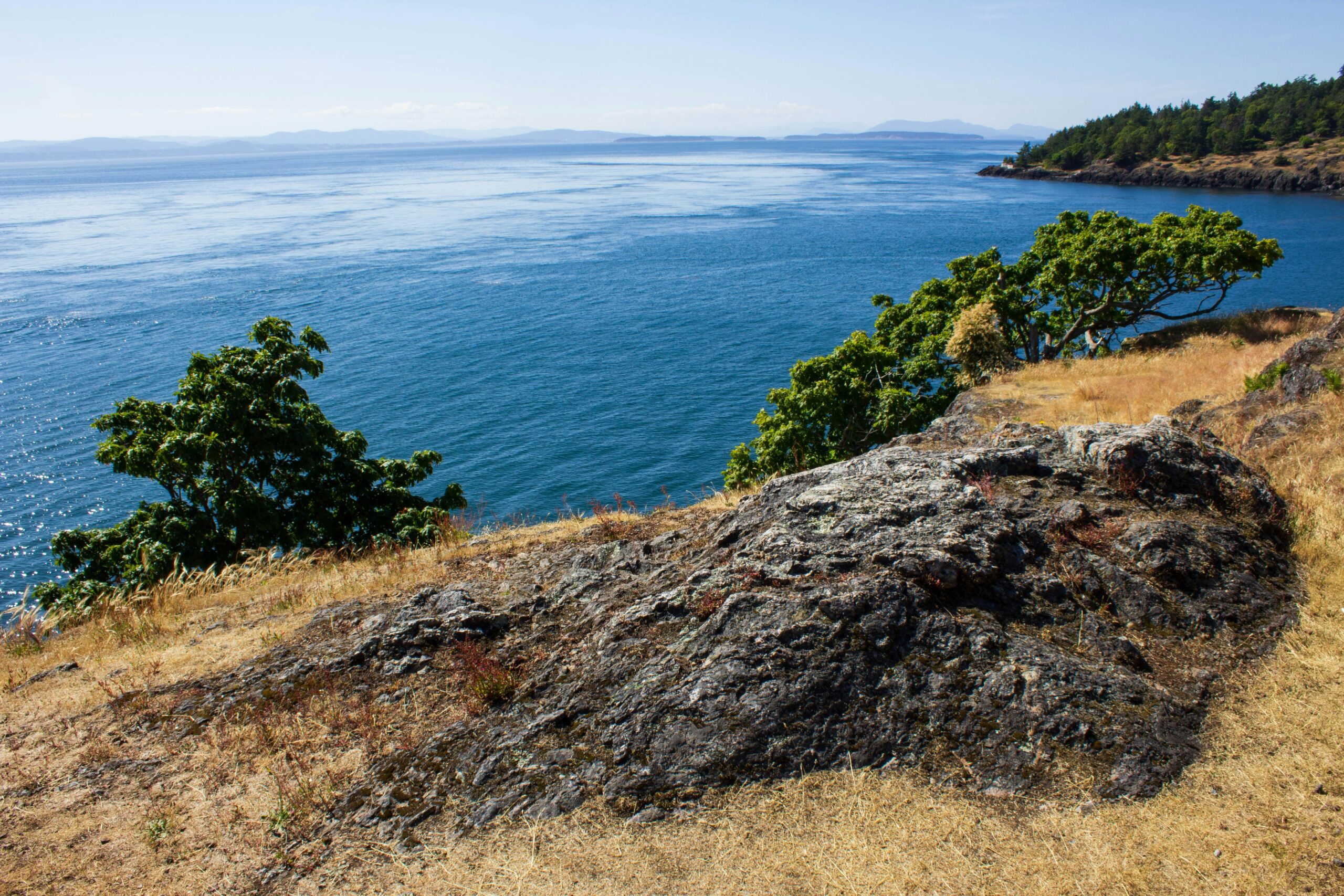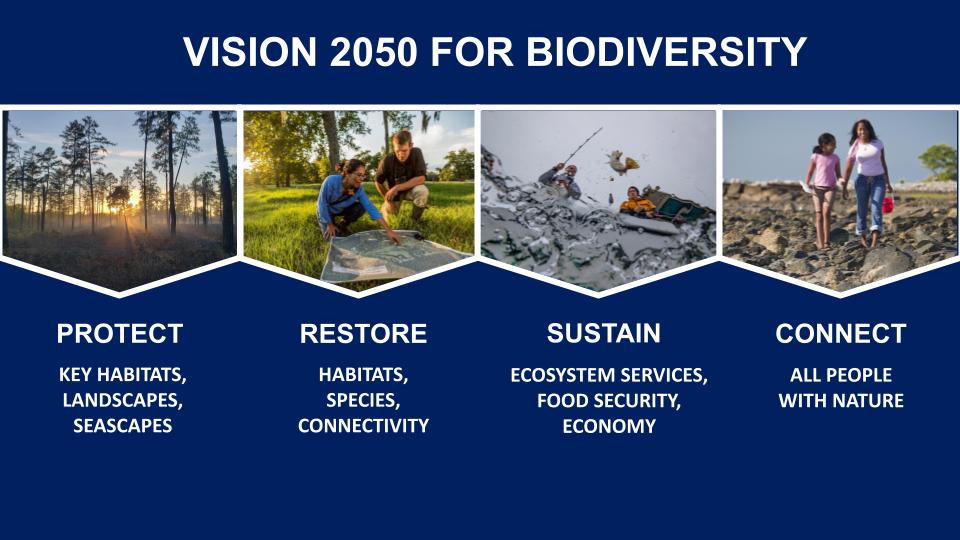
Blog
States Take on the National Ocean Biodiversity Strategy
September 9, 2024
This past June, the White House released the country’s first ever National Ocean Biodiversity Strategy – an ambitious plan developed in response to the ocean biodiversity crisis. Over 2 million species are presumed to live in the ocean and we all benefit from the unique interactions these species have with each other and the marine environment. Unfortunately, marine biodiversity is declining due to ocean acidification, overharvesting, coastal erosion, climate change, and more.
NCEL hosted a webinar to detail the Strategy and the role State legislatures play in the development of policies that increase access to biodiversity data, leverage new technology to support biodiversity and resource protections, and inspire the public to discover and value ocean life.

Highlights from the webinar included:
Why do we need a National Ocean Biodiversity Strategy?
The National Ocean Biodiversity Strategy was released to help guide the science and stewardship necessary to maintain and protect ocean life and its benefits for current and future generations. As human use of our ocean and climate change impacts increase, the need for strong ocean biodiversity data becomes even more important to address climate change, monitor ocean species and habitats, and advance a sustainable blue economy. Two of the lead writers of the Strategy, Gabrielle Canonico and Emmett Duffy, highlighted the goals of the Strategy:
- Goal 1: Drive delivery of ocean biodiversity knowledge at the national scale.
- Goal 2: Strengthen tools and institutions to deliver ocean biodiversity knowledge.
- Goal 3: Protect, conserve, restore, and sustainably use ocean biodiversity.
The National Oceanic and Atmospheric Association (NOAA) and the Smithsonian Institute, along with the Lenfest Ocean Program, are holding a series of Marine Biodiversity Dialogues in states and regions across the country to understand how biodiversity sustains healthy ecosystems and benefits people. Massachusetts and Florida are great examples of how states are leading the charge on advancing marine biodiversity.
Massachusetts’ Vision 2050 for Biodiversity
Massachusetts Department of Fish and Game Commissioner Thomas O’Shea detailed the Commonwealth’s process of developing national leading Biodiversity Conservation Goals Last year, Massachusetts Governor Maura Healy signed Executive Order 618 – which recognized the biodiversity crisis and directed the Department of Fish and Game to set marine and terrestrial conservation targets for 2030, 2040, and 2050. The EO aligns with existing federal biodiversity strategies like the 30×30 America the Beautiful Initiative and National Ocean Biodiversity Strategy, as well as existing state and local climate plans that recognize preserving biodiversity is a critical climate resilience strategy.
In response, the Department created a cross-division working group to assess existing data and policies, developed a draft framework to increase biodiversity across the Commonwealth, and held two Biodiversity Workshops to inform goal development. The Massachusetts Vision 2050 for Biodiversity seeks to protect, restore, sustain, and connect to support municipalities, communities, organizations, and individuals in identifying policy, regulatory, funding, or personal actions they can take to increase biodiversity. At the core of the Massachusetts plan is that biodiversity touches all aspects of our lives and by addressing biodiversity concerns you can also support climate action, environmental justice, and local economies. You can learn more about the Massachusetts Vision 2050 plan here.

Florida’s Biodiversity Toolbox
States need multiple legislative tools to improve marine biodiversity and messaging that allows for broad, cross-sector, bi-partisan support. Florida State Representative Lindsay Cross shared the wide range of legislative efforts happening across Florida to protect coastal ecosystems and simultaneously improve marine biodiversity.
CS/CS/SB 976 – Protection of Ecological Systems (2021) created the “Florida Wildlife Corridor Act” which funded the state’s Wildlife Corridor to preserve and protect green infrastructure and wildlife habitat. There is an opportunity to leverage this existing, popular piece of legislation to include more coastal areas and associated funding within the corridors.
CS/CS/HB 1557 – Department of Environmental Protection (2024) established the Kristin Jacobs Coral Reef Ecosystem Conservation Area in honor of the late Broward County state representative. The Conservation Area is part of the only barrier reef ecosystem in the United States and is home to more than 6,000 species of marine life including fish, stony corals, gorgonians, sponges, and other marine invertebrates. The reefs also provide more than $323 million in flood protection benefits annually and contribute to South Florida’s local economy by generating $5.7 billion in local sales and supporting 61,000 jobs.
Florida Ballot Amendment 2 – Establishing the Constitutional Right to Hunt and Fish (2024) would “preserve forever fishing and hunting, including by the use of traditional methods, as a public right and preferred means of responsibly managing and controlling fish and wildlife”. The Amendment is on the state ballot for 2024. While some opponents of the ballot initiative claim and proponents believe it would undermine non-lethal wildlife management methods, proponents of the Amendment believe it would help enhance ecosystems and promote game populations which provide opportunities for people to enjoy the state’s natural resources.
What’s Next?
States are critical in developing policies and initiatives that not only improve marine biodiversity, and in turn address climate change concerns, support the blue economy, and increase access and enjoyment of nature for current and future generations. If you have any ocean or marine biodiversity related questions or ideas, please feel free to reach out to NCEL’s Ocean Program Manager, Alissa Weinman.